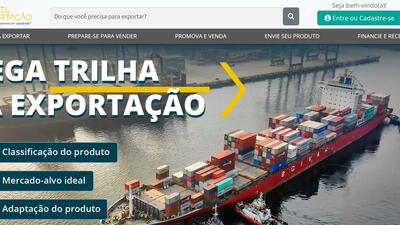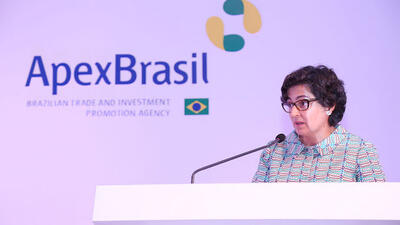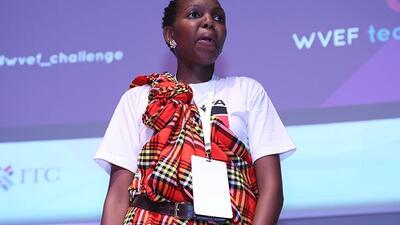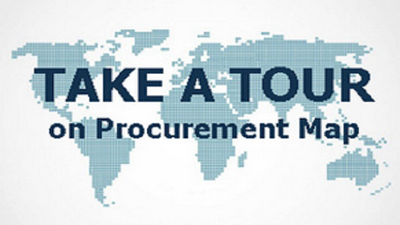South-South expansion in the coffee trade
The coffee value chain, in general terms, runs along a South-North axis, extending from grower to trader to roaster to retailer to consumer. But there is one distinctly South-South aspect to the industry: the trade in coffee processing equipment.
Founded 61 years ago in the state of São Paulo, Brazil, Pinhalense is the largest maker of coffee processing equipment in the world, providing machinery and services in 80 coffee-producing countries. The company estimates that three quarters of all coffee produced in the world passes through at least one Pinhalense machine before it reaches the consumer’s cup.
The company has not always been so international, of course. In the 1950s and 1960s, Pinhalense marketed its machinery to domestic producers, and it wasn’t until the 1970s that Pinhalense began exporting, primarily to Latin American countries and Angola.
Coffee exporters in Brazil typically had operations in other parts of the world too, and they began to recommend that Pinhalense supply the equipment to these operations as well. What they got from Pinhalense – and not from their northern hemisphere manufacturing contacts – was a deep understanding of coffee production processes and the environmental and social variables that come into play.
But geographic expansion for Pinhalense wasn’t quite as simple as shipping proven technology from São Paulo to other locations. Although the principles of coffee production are universal, aspects such as climate, target markets and social considerations can be quite different. Therefore Pinhalense had to adapt.
‘In the early 1980s, Pinhalense created an export department, and started to visit the other producing countries to understand their needs,’ said Carlos Brando, director of P&A Marketing International and former director of Pinhalense. ‘This was a period of intensive research and development for us. As we observed what other countries were doing, we came up with alternative solutions, and we found that some of these ideas were also applicable at home in Brazil.’
Pinhalense would never be the same again. In 1985, the company exported to about a dozen countries, and exports were under 5%. Only 10 years later, in 1995, it was selling in 50 countries and exports were about a third of overall sales.
From São Paulo to Mbinga
A project reflective of Pinhalense’s work around the developing world took place in 2007. Pinhalense supplied a large amount of equipment to a client in Mbinga, a mild-Arabica producing district in the highlands of South Tanzania.
‘Our customer was a coffee trader and exporter,’ Brando says. ‘He needed more raw product of the quality that the market demanded. The small growers in the area did not have the capital to buy machines that could deliver that quality, so the trader bought the machines from us and supplied them to the producers. Included in the package, of course, was technical assistance, which the trader provided.’
The main challenge, Brando says, is that the Pinhalense technology was different from what the growers were used to. They had been using disc pulpers, and Pinhalense introduced drum pulpers – different technical approaches to accomplish the same thing. They also had a process by which they fermented the coffee naturally in water, and that was replaced by a mechanical process.
‘Not only were we changing the mechanics of the machine but the actual approach to processing the coffee,’ Brando says. ‘What made the difference was that the demand was already there. We didn’t have to sell the benefits of these processes. There was a waiting buyer – our customer – for any coffee processed using this equipment.’
A series of Pinhalense wet production lines were assembled in rural communities to serve as small processing centres. Additionally, a complete high-capacity Pinhalense dry mill was built at the client’s main warehouse. Growers in the vicinity bring their harvested cherries to the processing centres, to undergo pulping and mucilage removal before drying. After drying, coffee from each of the small local centres is taken to the company’s dry mill to be cleaned, separated, hulled and prepared for export.
This system also allows the small-scale farms of the region to have their coffees processed almost immediately after harvesting, avoiding quality losses. As a result, the growers started to deliver a better product, they got a better price, the exporter developed loyalty for this network of suppliers, and he received the quality of product he needed.
Since the project started operations in 2007, the people living in Mbinga and neighbouring villages have been employed and the lives of coffee farmers have improved. The company’s coffee-processing centres and dry mill employ more than 300 people. The project motivated growers to plant more coffee trees, boosting coffee production in the region and enhancing the growers’ profits and quality of life.
Achieving ‘win-win’ along the entire value chain
The Tanzanian example has played out in different ways all over the world. But when it comes to sustainability, Brando emphasizes that coffee grown using sustainable practices represents only 5% to 10% of coffee sold.
‘When I started in this business, I held a map of the world in front of me and was so excited by the prospect of introducing new technology in all these places,’ Brando says. ‘We changed the profile of the coffee business in many countries, and in the process we helped the farmer make more money and become more independent. I’m very proud of that.’
Having reached the limits of geographical expansion, Brando began instead to see technology as the frontier – to examine what could be changed to make the coffee industry better. So he became increasingly involved in consulting and technology transfer.
‘We started to look at harder questions such as income generation and sustainability – and how our equipment could help. Of course, developing technology is difficult. But there’s also a social component. You can’t simply go to a farmer and tell him you have a better way for him to process his product. He needs to have a buyer for that improved product, and a market. These and other social and marketing challenges can be very tough, and this is the sort of thing that excites me today.’
Penagos Hermanos IN COLOMBIA
Penagos Hermanos & Cia. in Colombia is another Latin American company with a long tradition of manufacturing and exporting farm machinery for a range of agricultural products. Equipment for coffee processing was included in the company’s product mix in the 1980s, and Penagos equipment is in use today in many coffee-producing countries. Penagos has provided equipment for two ITC-associated projects.
From 1997 to 2000, ITC and the International Coffee Organization and the Common Fund for Commodities worked together on a range of experiments in coffee-producing countries – adapting products, processes and marketing of coffee to new trends in coffee consumption.
Uganda was among five countries where experiments were conducted. Penagos donated one of their portable, integrated pulping units, which pulps and removes mucilage simultaneously. This technology, which was new in Africa at the time, produces washed coffee and avoids the laborious manual rubbing and washing of parchment necessary to produce what used to be known as semi-washed coffee.
In 2009, ITC and local partners completed a national strategy for the production and export of coffee from Cameroon. The strategy was prepared in close cooperation with several international organizations and with financial support from the European Commission. Based on one of the recommendations in the strategy, in 2010 the World Bank, through its Programme d’amélioration de la competitivité agricole (PACA), offered to fund four small ecological coffee washing stations with four cooperatives. In mid-2010, Penagos won the tender for the equipment, which is now operational in Cameroon.
The ecological unit is an innovative system that simplifies the coffee washing process through the mechanical removal of the mucilage when the coffee cherries are pulped. This mechanical system has the significant advantage of reducing the water that is needed to wet-process coffee by as much as 90%.
With the growing demand for high-quality washed arabica coffee as well as the potential for washed robusta, the introduction of this process is expected to add significant value to Cameroon’s coffees. The arabicas up to now have been almost entirely hand-pulped by smallholder farmers. The latter process can produce a good quality coffee, but the clean and reliable regularity produced from these new ecological machines makes the coffee particularly attractive.












